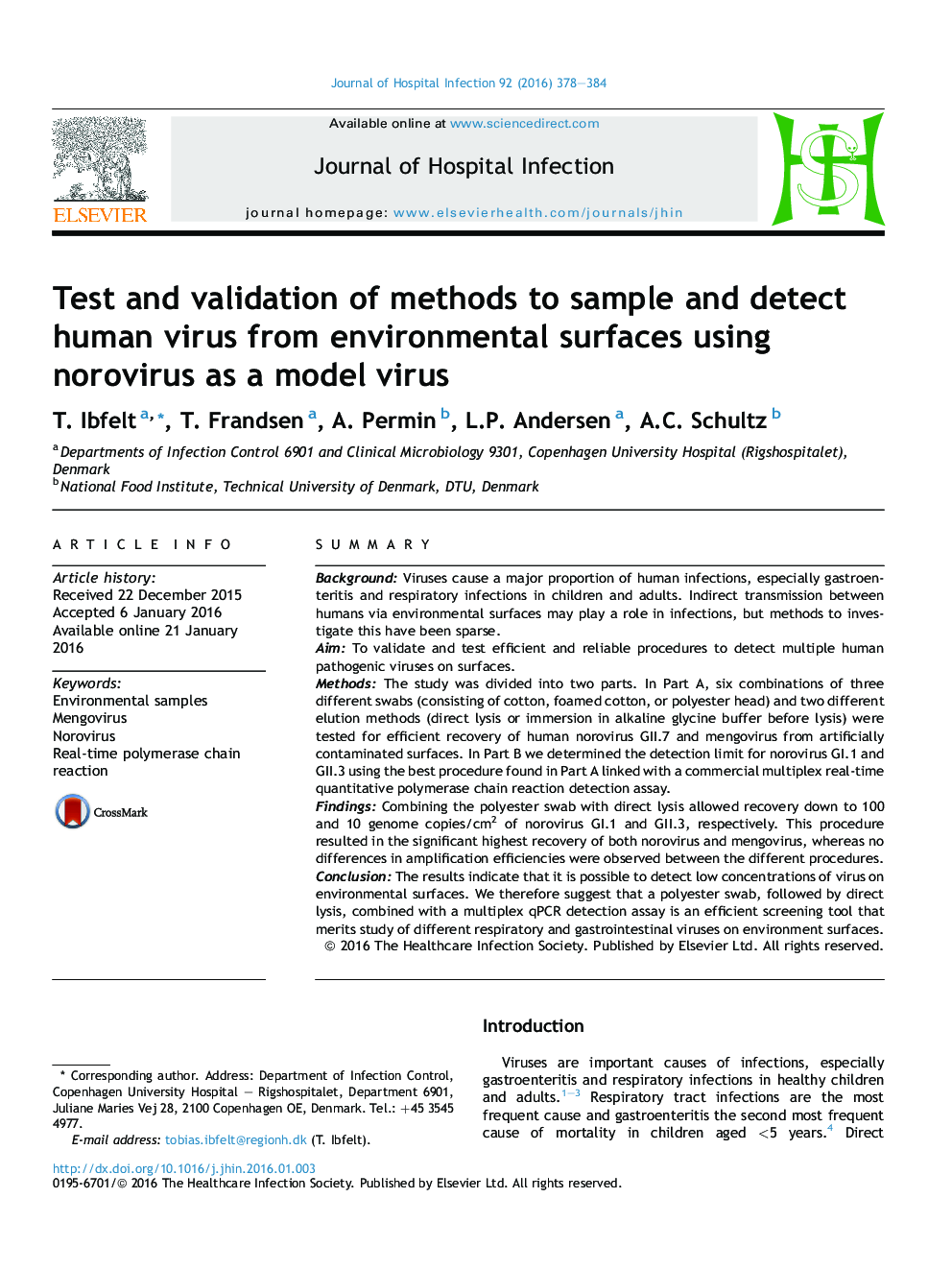| Article ID | Journal | Published Year | Pages | File Type |
|---|---|---|---|---|
| 3371479 | Journal of Hospital Infection | 2016 | 7 Pages |
SummaryBackgroundViruses cause a major proportion of human infections, especially gastroenteritis and respiratory infections in children and adults. Indirect transmission between humans via environmental surfaces may play a role in infections, but methods to investigate this have been sparse.AimTo validate and test efficient and reliable procedures to detect multiple human pathogenic viruses on surfaces.MethodsThe study was divided into two parts. In Part A, six combinations of three different swabs (consisting of cotton, foamed cotton, or polyester head) and two different elution methods (direct lysis or immersion in alkaline glycine buffer before lysis) were tested for efficient recovery of human norovirus GII.7 and mengovirus from artificially contaminated surfaces. In Part B we determined the detection limit for norovirus GI.1 and GII.3 using the best procedure found in Part A linked with a commercial multiplex real-time quantitative polymerase chain reaction detection assay.FindingsCombining the polyester swab with direct lysis allowed recovery down to 100 and 10 genome copies/cm2 of norovirus GI.1 and GII.3, respectively. This procedure resulted in the significant highest recovery of both norovirus and mengovirus, whereas no differences in amplification efficiencies were observed between the different procedures.ConclusionThe results indicate that it is possible to detect low concentrations of virus on environmental surfaces. We therefore suggest that a polyester swab, followed by direct lysis, combined with a multiplex qPCR detection assay is an efficient screening tool that merits study of different respiratory and gastrointestinal viruses on environment surfaces.
